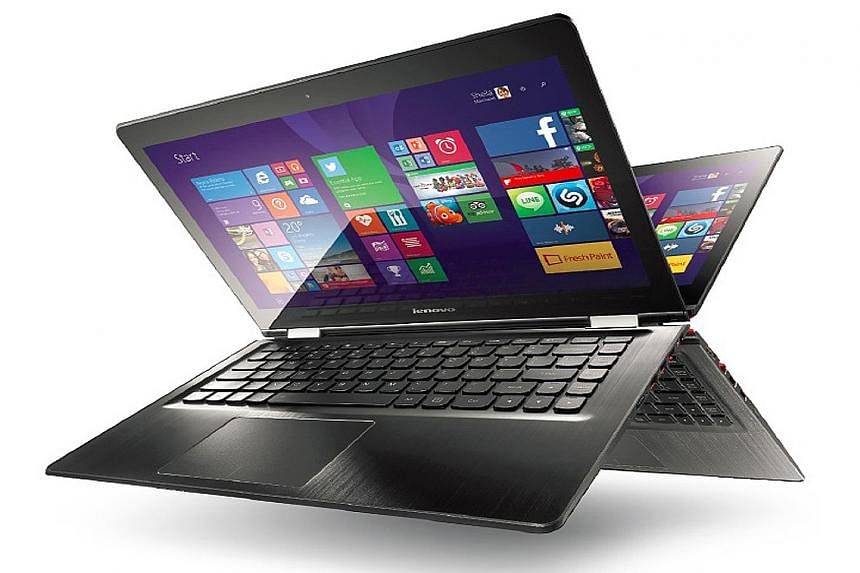Lenovo's Flex series of Windows convertibles are basically more affordable versions of its premium Yoga-branded devices.
At least that was my conclusion for last year's Lenovo Flex 2, which costs just $1,299.
But its inevitable sequel is dubbed the Yoga 500, not the Flex 3. Oddly enough, Lenovo persists in calling it the Flex 3 in the United States.
Whatever its name, the Yoga 500 is a relatively affordable hybrid computer that you can switch between tablet and laptop modes, simply by flipping its flexible screen 360 degrees.
-
TECH SPECS
-
PRICE: $1,499
PROCESSOR: Intel Core i7-5500U (2.4GHz)
GRAPHICS: Nvidia GeForce GT 940M
RAM: 8GB
SCREEN SIZE: 14 inches, 1,920 x 1,080 pixels
CONNECTIVITY: 2 x USB 3.0, 1 x USB 2.0, HDMI, Ethernet port, SD card reader, audio jack
BATTERY: 45 watt-hour
-
RATING
FEATURES 1 2 3 4 5
DESIGN 1 2 3 4 5
PERFORMANCE 1 2 3 4 5
VALUE FOR MONEY 1 2 3 4 5
BATTERY LIFE: 1 2 3 4 5
OVERALL 1 2 3 4 5
The downside: Unlike high-end hybrids that are light enough to work as tablets, mainstream ones like the Yoga are so heavy that they quickly become a drag on your arms when used in slate mode.
The Yoga 500 weighs 1.8kg. I like to think of these hybrids as enhanced laptops.
The Yoga may not be much of a tablet, but it is useful enough in its tent and stand modes, where the device can rest on a table or your lap, and you en-gage with it via its touchscreen.
If you have no idea what apps to use with the Yoga, Lenovo's Harmony app shows trending apps for each of the Yoga's usage modes (laptop, tablet, stand and tent), along with the apps that you use most frequently for each mode.
With a 1,920 x 1,080-pixel screen resolution, the Yoga is suitable for watching full-HD videos at their native resolution. Icons and text look crisp.
But the screen could be brighter. It is also too reflective, likely because of the air gap between the display and its outer layer.
Its plastic chassis has been given a sheen of class with an attractive red lid and a brushed metallic palm rest.
Key travel is decent, but the keyboard feels mushy, and there is no backlighting. The Function keys are mapped to multimedia controls such as volume control and screen brightness. The touchpad is large and comfy to use, with a smooth surface.
Given its ability to transform into a tablet, it would not make sense to have the power button inside the laptop. Instead, the Yoga has it on the right edge, and a volume rocker on the left edge.
Important connectors include an SD card reader as well as an Ethernet port.
The Yoga is loud for a laptop. A Dolby audio app lets you switch between optimised settings for music, games and movies.
It has a dedicated graphics chip, albeit a mid-range version.
It is good enough to run games if you adjust the screen resolution to 1,366 x 768 pixels or tweak the game details to medium or lower.
For instance, Bioshock Infinite ran at around 33 frames per second at 1,920 x 1,080 pixels and at Low graphics setting.
Battery life was decent at around six hours, especially for a laptop with dedicated graphics.
• The Yoga performs to expectations for an Intel Core i7-powered PC with a slow 1TB hard drive. A solid-state drive was always unlikely with the Yoga's affordable $1,499 price tag.
Vincent Chang

